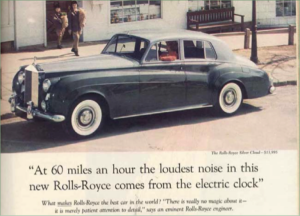My songwriter son, Dalton, asked me recently to join him and my husband in their morning songwriting exercises.
They had attended an International Songwriters Conference a few weeks back, so I was eager to learn what the pros had taught them.
In the process, I learned an exercise that helped me become a much faster and better writer. When I applied this songwriting technique to my own writing, I immediately saw results.
Now, ideas for my writing projects instantly and constantly appear. And I can complete writing projects much faster than before.
Like me, I think you’ll find this exercise will help you consistently create an avalanche of ideas and become a much more productive writer.
This amazing technique is called “object writing.”
What is Object Writing?
Object writing is an exercise where you randomly pick an object, emotion, or event, and then write about it for a short time, while focusing on all of your senses.
An object writing session is typically 10 minutes.
And staying focused on your senses is key to this exercise.
Whether you write novels, white papers, or sales letters, all writers can get stuck in a routine to some degree.
Whereas, tuning into your senses gives you the opportunity to explore different ways to express whatever it is you’re writing about.
This can quickly free up your creativity as a writer.
Imagine if I asked you to describe your car. You might tell me what color it is, the make, or where you bought it.
But how does it feel to drive your car? What does the interior smell like? Do you have a textured seat cover? What do you listen to in your car?
You can see how details like these would make a description of your car come alive, rather than only including visual or factual details.
Let me make one thing clear – you don’t object write for your freelance gigs. This is an exercise you do to strengthen your writing muscles and get you in the right frame of mind for your day’s work.
Although, object writing can also be a good way to brainstorm ideas for paid projects.
How to Do an Object Writing Exercise
Start by randomly choosing an object in your home, an emotion you’re feeling, or a recent event in your life to write about.
Next, get in touch with all seven of your senses:
- Sight
- Smell
- Hearing
- Touch
- Taste
- Organic (sensation from internal organs)
- Kinesthetic (sensory input from the actions of your body)
Then set a timer for 10 minutes and start writing about your chosen object, feeling, or event. You can do this with pen and paper or on your computer.
Don’t worry about writing in complete sentences. And above all, don’t self-edit as you write. Simply write whatever sensory impressions come to mind in a stream-of-consciousness style.
Also, you don’t have to only write about your chosen object. If your mind veers off in different directions, go with it and write about whatever comes up.
Here’s an excerpt from one of my exercises, writing about New Year’s Eve:
Sparkly, sequin dresses, black high-heel pumps (Sight). Heart racing, butterflies in stomach (Organic). Excited, happy, renewed—what awaits in the new year? Full of hope, anticipation, a new year, a new you. This year will be different. Setting goals, making plans. Tingly bubbles touch my tongue, explosions of flavor (Touch & Taste). Feet sore, balls of feet aching from uncomfortable shoes (Organic). Stale beer and fresh-brewed coffee intermingle in the air (Smell). Laughter, glasses clinking, people yelling, pots banging (Hearing).
Can you see how freely I wrote? The words just tumbled out. And there is some great imagery there.
How to Get the Most Out of Your Object Writing Session
In order to get the most benefit from an object writing exercise, it’s best to:
1. Do it first thing in the morning
Berkeley College professor and celebrated lyricist Pat Pattison has the following advice:
“Two beings inhabit your body: you, who stumbles groggily to the coffeepot to start another day, and the writer in you, who could remain blissfully asleep and unaware for days, months, even years as you go on about your business. If your writer is anything like mine, “lazy,” even “slug” is too kind. Always wake up your writer early, so you can spend the day together.”
To wake up your writer, set your alarm 10 minutes earlier and do 10 minutes of object writing first thing in the morning.
Yes, I know this can be a stretch. But the benefits will extend to your freelance assignments for the rest of the day.
2. Stop writing precisely at the 10-minute mark
You may be tempted to do more than 10 minutes.
However, if you go over your 10 minutes, you’ll not only find it difficult to consistently block out that time, but you’ll also be tempted to use a longer session one day as an excuse not to do it the next.
So set a timer and stop promptly at 10 minutes. Even if you are in the middle of a great idea… stop.
At first, you’ll find you won’t get to your best ideas until the timer goes off. This frustrates your inner writer.
But this also trains your inner writer to get to the “good stuff” faster because it doesn’t want to get cut off!
What to Do after Your Object Writing
Once you’re finished your object writing, go through what you’ve written and take note of which senses you used, like I did in my example above.
Do you see any of the seven senses missing? Are you using one sense more often than the others?
These are important observations to help you pay more attention to any of your under-used senses during your next object writing session.
It’s also helpful to record the best ideas or images you used in your object writing in a separate document. Then, whenever you need a good idea or image for a project you’re working on, you can refer back to your document to find an appropriate one.
How Object Writing Will Benefit Your Writing Skills
Once you start doing this object writing exercise regularly, the benefits will extend to all the writing you do as a Barefoot Writer, especially paid assignments.
In my experience, these are two key benefits that can come from making object writing a regular habit.
1. You’ll learn to write faster
Object writing helps silence your inner critic.
Self doubt and criticism can slow down even the best of writers. But object writing allows you to write freely and spontaneously for 10 minutes, which effectively puts self-judgement on hold for that time.
And if you do this often enough, the ability to write without constraint will transfer over to your regular writing.
That nagging editor in the back of your head will get quieter, and you’ll find you can write and finish projects much faster.
Personally, my writing productivity has just about tripled since I started.
In fact, when I started doing object writing exercises regularly, it took me about four hours to write a 500-word product description, but after about three weeks of consistent object writing, I was able to write them in about 1 to 1 1⁄2 hours.
2. You’ll create better writing
Object writing gives you the ability to tap into copy ideas much more quickly than before. Because you “wake up” your writer early, your inner writer will be working all day to create a pool of ideas.
Gradually, you’ll get to your best stuff faster and faster during an object writing session until you’re able to instantly tap into your well of good ideas.
As you go through your day, ideas will start popping into your head for things like headlines and leads for various projects, topics for marketing emails or blog posts, subjects for books, and countless other ideas for your writing.
It’s also a good practice to write down these ideas as they come to you.
Keep a notepad or your phone handy to record any ideas that may be useful for your writing.
And the next time you sit down to work on a project, make sure you incorporate any ideas you’ve recorded throughout the day.
Start an Object Writing Habit Today
Your task for today is to pick a random object and write about it.
If you need any help choosing an object, you can visit objectwriting.com. They provide a new word to write about every day. And as soon as you open the homepage, a 10-minute timer starts counting down for your object writing session.
Remember to use all seven senses. Just let the words flow – don’t worry if they don’t make sense. Have fun with it.
Do this every day for several weeks – make it a part of your morning routine – and watch how you start writing better and faster!






